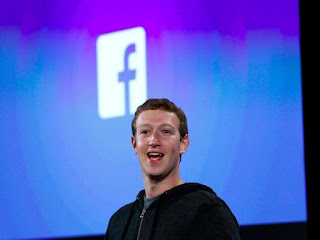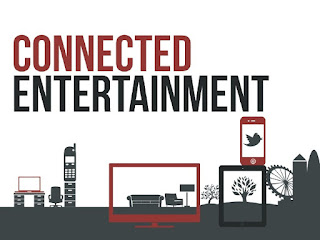In the IT era, the best of times are the worst times. Computer hardware gets cheaper, faster and more portable. New information technology systems and business analytic systems captured people’s imagination. Furthermore, corporate IT spending has bounced back from its plunge back in 2001.
COPING WITH TECHNOLOGY ABUNDANCE IN THE MARKETPLACE TODAY
As the drumbeats of Information Technology become louder, they pose a threat to overwhelm general managers. One of the biggest issues that companies face is coping with technology abundance. It’s difficult for executives to determine what all the apps, systems and acronyms do, let alone decide which to purchase and how to adopt them successfully. Most managers feel unequipped to navigate the constant change in the technology landscape and so involve themselves with IT less and less. The digital transformation of the business environment is at the top of the agendas of CEO and CIO, as it should be. Customer expectations and behaviors change at dizzying pace. Furthermore, innovation that’s needed to compete effectively would be defined more and more by software.

DETERMINING WHAT TYPES OF IT PROGRAMS ARE VIABLE FOR THE FUTURE
Thoroughly inventing the IT wheel isn’t a sustainable starting point. Rebuilding existing services and processes on new platforms consume a lot of valuable resources, introduces unacceptable risk and will take a long time. How do CIOs decide what parts of the Information technology infrastructure have a viable future and what would be phased out to make room for advancement? The decision essentially should be based on business impact, value and risk. Also, there are technology hurdles, which investments should also get over simply to be taken into consideration. When evaluating where it makes sense to push IT to the new digital age, there are three major areas to measure against. These are the following:
1. DevOps ready. If innovation’s defined by software, the capacity of delivering software capabilities more effectively and faster defines successful organizations. DevOps practices and the culture of continuous delivery, which accompanies will be the heart of the competitive weapon. For a technology investment to live a happy and long life in the brave world of more agile and faster software delivery, it requires effectively meshing with a DevOps worldview. For instance, a lot of mainframe developers integrate actively what are very traditional app development environments to high-speed DevOps world with huge success. The compatibility of DevOps soon would need to be part of the evaluation criteria or that information tech investment these days may not be able to keep up with the future.
2. Security lifespan. As more and more of the core business model of companies’ runs on IT, thus the scope and criticality of intellectual property grow in proportion. Security therefore would finally complete the slow evolution from business impediment that is often forgotten to pivotal element in innovation strategy. It’s important that tools and systems, both present and future have long security lifespans. The recent ransom ware attacks in the world were in no small part successful since they targeted systems that already were well past the security sell-by dates. CIOs in response should always have the security vulnerability assessment lens nearby when reviewing if an existing technology could make the all-important leap to the future of the digital enterprise. Without a security path forward, it’s time to decide if a replacement is required to prevent future compliance and security damages.
3. Flexibility and connectivity. Hybrid information technology environments would rule the business information technology world. It’s not only an accumulation of cloud service and on premise solutions but a real hybrid model as well. A complex and mixture of platforms, consumption models and delivery mechanisms that are built and operated with ample agility to keep pace with the continuous change in the business requirements.
For any technology, the question would be how well it would coexist in the world with everything else. Standalone platforms are quickly becoming a thing of the past. Everything would have to be flexible, connected and responsive to change soon. If a critical business system could not find a new connected home, it could be near its end of days. Nonetheless, the most venerable business systems can have long lives ahead if they could make the critical connectivity work. The rising pressure to digitize business would continue to skyrocket in the years to come as the rate of change in customer demand accelerates, along with the technology landscape’s complexity. Nonetheless, enterprise CIOs have a lot of tools to create an innovative hybrid infrastructure, provided that they could evaluate carefully the suitability of what exists these days.
Much of legacy information tech actually is highly applicable to the next generation of digital business. Furthermore, with the right metrics to evaluate against, enterprises and businesses could rapidly move nowadays to build what they would need tomorrow.
COPING WITH TECHNOLOGY ABUNDANCE IN THE MARKETPLACE TODAY
As the drumbeats of Information Technology become louder, they pose a threat to overwhelm general managers. One of the biggest issues that companies face is coping with technology abundance. It’s difficult for executives to determine what all the apps, systems and acronyms do, let alone decide which to purchase and how to adopt them successfully. Most managers feel unequipped to navigate the constant change in the technology landscape and so involve themselves with IT less and less. The digital transformation of the business environment is at the top of the agendas of CEO and CIO, as it should be. Customer expectations and behaviors change at dizzying pace. Furthermore, innovation that’s needed to compete effectively would be defined more and more by software.

DETERMINING WHAT TYPES OF IT PROGRAMS ARE VIABLE FOR THE FUTURE
Thoroughly inventing the IT wheel isn’t a sustainable starting point. Rebuilding existing services and processes on new platforms consume a lot of valuable resources, introduces unacceptable risk and will take a long time. How do CIOs decide what parts of the Information technology infrastructure have a viable future and what would be phased out to make room for advancement? The decision essentially should be based on business impact, value and risk. Also, there are technology hurdles, which investments should also get over simply to be taken into consideration. When evaluating where it makes sense to push IT to the new digital age, there are three major areas to measure against. These are the following:
1. DevOps ready. If innovation’s defined by software, the capacity of delivering software capabilities more effectively and faster defines successful organizations. DevOps practices and the culture of continuous delivery, which accompanies will be the heart of the competitive weapon. For a technology investment to live a happy and long life in the brave world of more agile and faster software delivery, it requires effectively meshing with a DevOps worldview. For instance, a lot of mainframe developers integrate actively what are very traditional app development environments to high-speed DevOps world with huge success. The compatibility of DevOps soon would need to be part of the evaluation criteria or that information tech investment these days may not be able to keep up with the future.
2. Security lifespan. As more and more of the core business model of companies’ runs on IT, thus the scope and criticality of intellectual property grow in proportion. Security therefore would finally complete the slow evolution from business impediment that is often forgotten to pivotal element in innovation strategy. It’s important that tools and systems, both present and future have long security lifespans. The recent ransom ware attacks in the world were in no small part successful since they targeted systems that already were well past the security sell-by dates. CIOs in response should always have the security vulnerability assessment lens nearby when reviewing if an existing technology could make the all-important leap to the future of the digital enterprise. Without a security path forward, it’s time to decide if a replacement is required to prevent future compliance and security damages.
3. Flexibility and connectivity. Hybrid information technology environments would rule the business information technology world. It’s not only an accumulation of cloud service and on premise solutions but a real hybrid model as well. A complex and mixture of platforms, consumption models and delivery mechanisms that are built and operated with ample agility to keep pace with the continuous change in the business requirements.
For any technology, the question would be how well it would coexist in the world with everything else. Standalone platforms are quickly becoming a thing of the past. Everything would have to be flexible, connected and responsive to change soon. If a critical business system could not find a new connected home, it could be near its end of days. Nonetheless, the most venerable business systems can have long lives ahead if they could make the critical connectivity work. The rising pressure to digitize business would continue to skyrocket in the years to come as the rate of change in customer demand accelerates, along with the technology landscape’s complexity. Nonetheless, enterprise CIOs have a lot of tools to create an innovative hybrid infrastructure, provided that they could evaluate carefully the suitability of what exists these days.
Much of legacy information tech actually is highly applicable to the next generation of digital business. Furthermore, with the right metrics to evaluate against, enterprises and businesses could rapidly move nowadays to build what they would need tomorrow.



